Its sunshield now in place, the James Webb Space Telescope is unfolding by the numbers while en route to its new home.
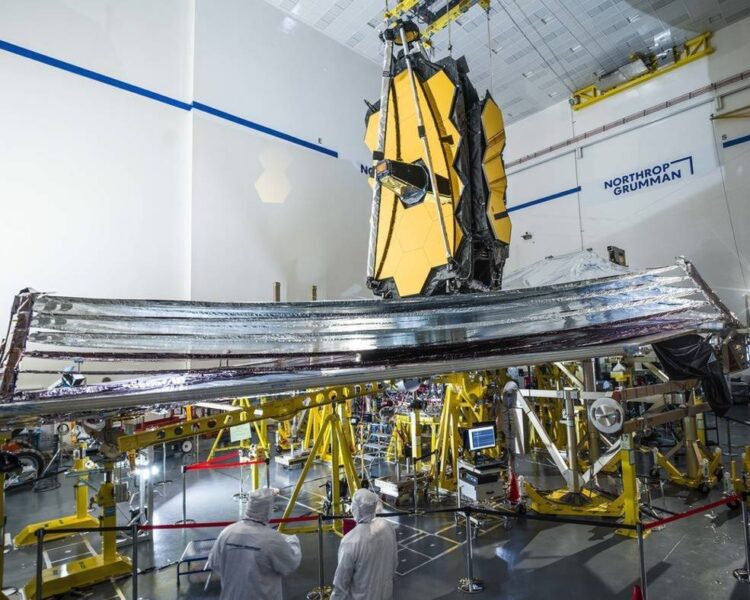
NASA / Chris Gunn
Just over a week after launch, the James Webb Space Telescope (JWST) has sofar passed every major deployment milestone with flying colors.
The Road to L2
The JWST completed a flawless launch from the Guiana Space Center on Christmas morning and is already more than halfway to the Sun-Earth L2 Lagrange point, 1.5 million kilometers (almost a million miles) "behind" Earth relative to the Sun. Currently, JWST is 567,000 miles from Earth and more than twice as far away as the Moon. (Track its movements here.)
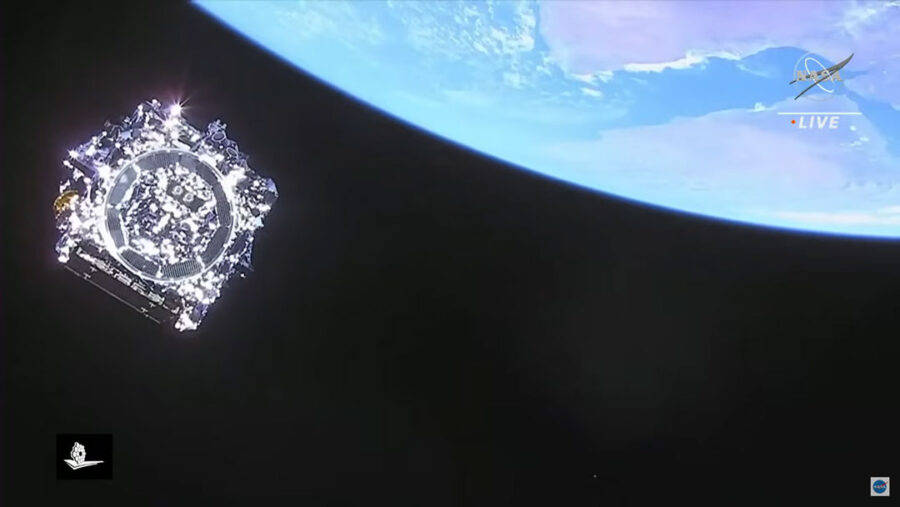
NASA / ESA
The first two mid-course corrections used a minimal amount of fuel, and team members expect that less fuel will be needed for the final burn that will place the telescope in its halo orbit around L2. As a result, the fuel JWST needs for station-keeping (maintaining its halo orbit at L2) should last well past its primary 10-year mission.
Despite its distance, amateur and ground-based observatories have managed to capture the space telescope as it speeds away:
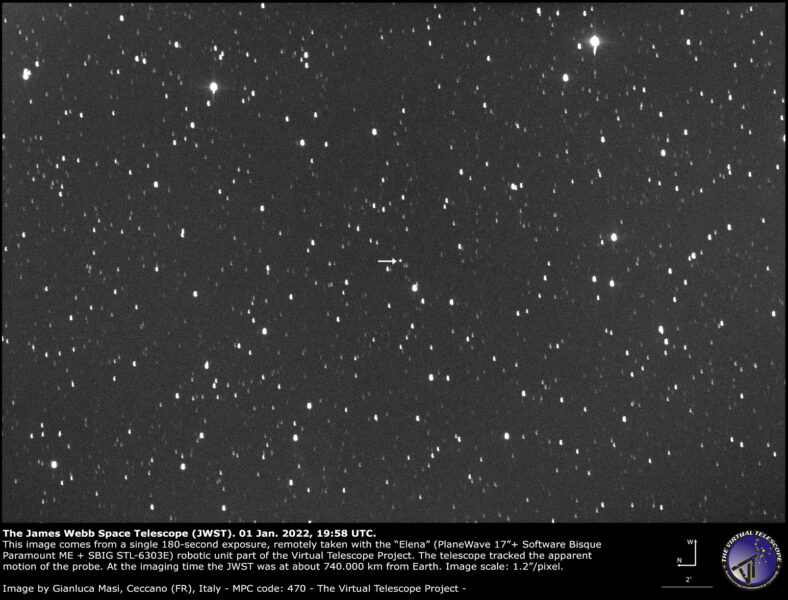
Gianluca Masi / The Virtual Telescope Project
Fifty major deployment steps take the space telescope from its stowed launch configuration to an unfolded, operational form. The initial deployment of the booms to support the tennis court–size sunshield occurred on New Year’s Eve, and the unfurling and deployment of the sunshield itself occurred this week.
The sunshield deployment is critical to the telescope's infrared observations, which require temperatures below 50 Kelvin (-223° C or -370° F), so this deployment marks an important milestone for the mission. The sunshield consists of five layers of a lightweight material called Kapton; the material reflects sunlight and its structure helps radiate away heat.
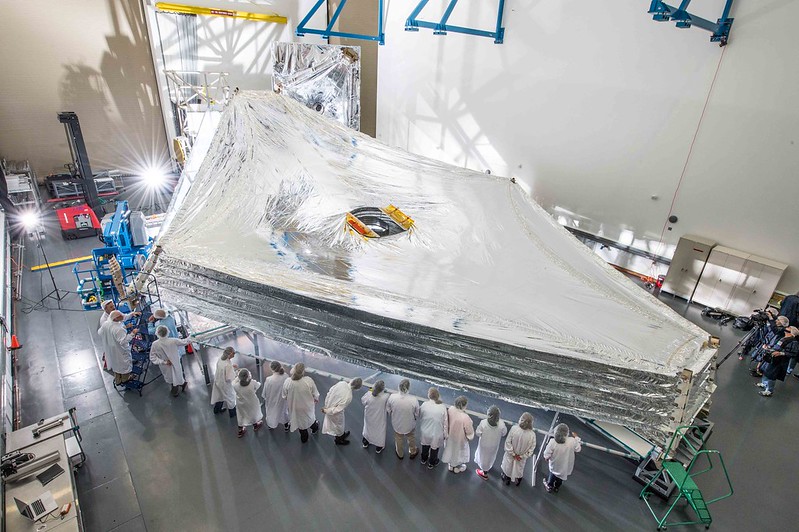
NASA / Chris Gunn
Sunshield tensioning was delayed a day to allow the team to optimize the telescope's solar power systems, as well as providing additional time to analyze and understand how the telescope behaves in space. Engineers are now learning about how the telescope adjusts as it unfolds in a vacuum. Because of its size, JWST could not be fully unfolded for testing in a thermal vacuum chamber on Earth, and the structure has proven to flex slightly differently in space.
“The rates at which some components of the observatory cool or heat are slightly different than predicted by computer models,” says JWST program scientist Eric Smith (NASA). “This means we need to use the built-in heaters differently than forecast. This in turn changes how power demands evolve during commissioning.” Built-in flexibility in the timeline allows for the ability to adjust for these kinds of uncertainties.
This is it: we’ve just wrapped up one of the most challenging steps of our journey to #UnfoldTheUniverse.
With all five layers of sunshield tensioning complete, about 75% of our 344 single-point failures have been retired! pic.twitter.com/P9jJhu7bJX
— NASA Webb Telescope (@NASAWebb) January 4, 2022
Final sunshield tensioning of the first layer (the largest and the outer one that will directly bear the full brunt of the Sun) occurred on Monday, January 3rd, at 20:48 UT / 3:48 p.m. EST, followed by the tensioning of layers two and three at 21:09 UT/4:09 p.m. EST and 22:48 UT/5:48 p.m. EST, respectively. Today, the team announced that the tensioning of the final two layers is complete, making the deployment of the sunshield successful.
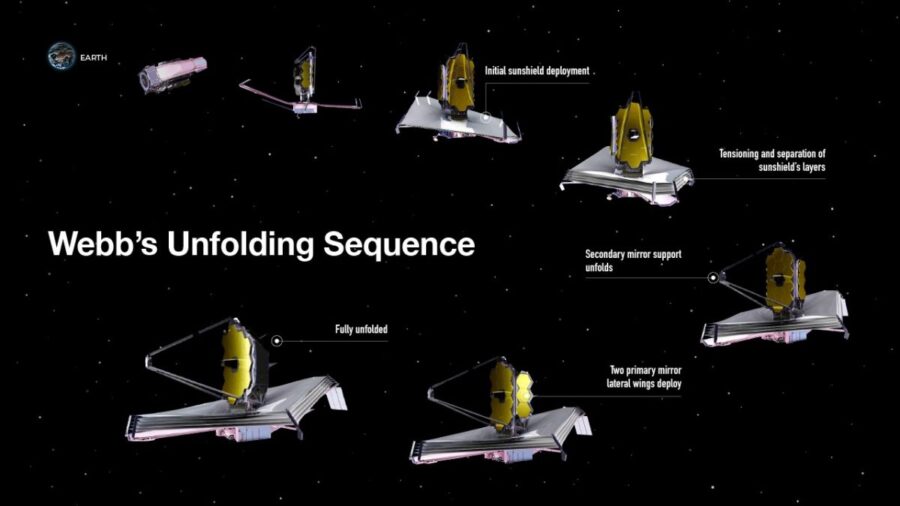
NASA
What’s Next for JWST
Several unfolding steps remain, including the secondary mirror deployment, the unfolding of the Aft Deployed Instrument Radiator (ADIR), and unfolding of the 18 segments of the 6.5-meter primary mirror. Within the next week or so, we can expect the deployment phase to complete. Then, 29 days after launch, an engine burn will insert the space telescope into a halo orbit around L2.
“The telescope will go into orbit around the L2 point at the end of the month — on January 23rd,” says Heidi Hammel (NASA-GSFC). “Once we are there, the Webb team will start commissioning the optics.” Commissioning and calibration of the optics and instruments will last approximately five months.
“Part of that commissioning requires getting starlight through the instruments, so that will be the ‘first light’ in a technical sense,” Hammel adds, “though the star images will start out of focus (bringing them into focus is the whole point of the optics commissioning).”
Science operations will begin this summer.
A generation in the making, the $11 billion JWST is set to push forward the boundaries of modern astronomy. With its sensitivity to infrared wavelengths, JWST will help astronomers study the formation of the first stars and galaxies in the very early universe. It will also enable the exploration of exoplanet atmospheres, looking for water, oxygen, carbon dioxide, and other markers that the chemistry needed for life might be present.
For now, a fully tensioned sunshield means less tension among astronomers, who can breathe a sigh of relief before taking the next steps on the road to discovery.
 0
0









Comments
You must be logged in to post a comment.